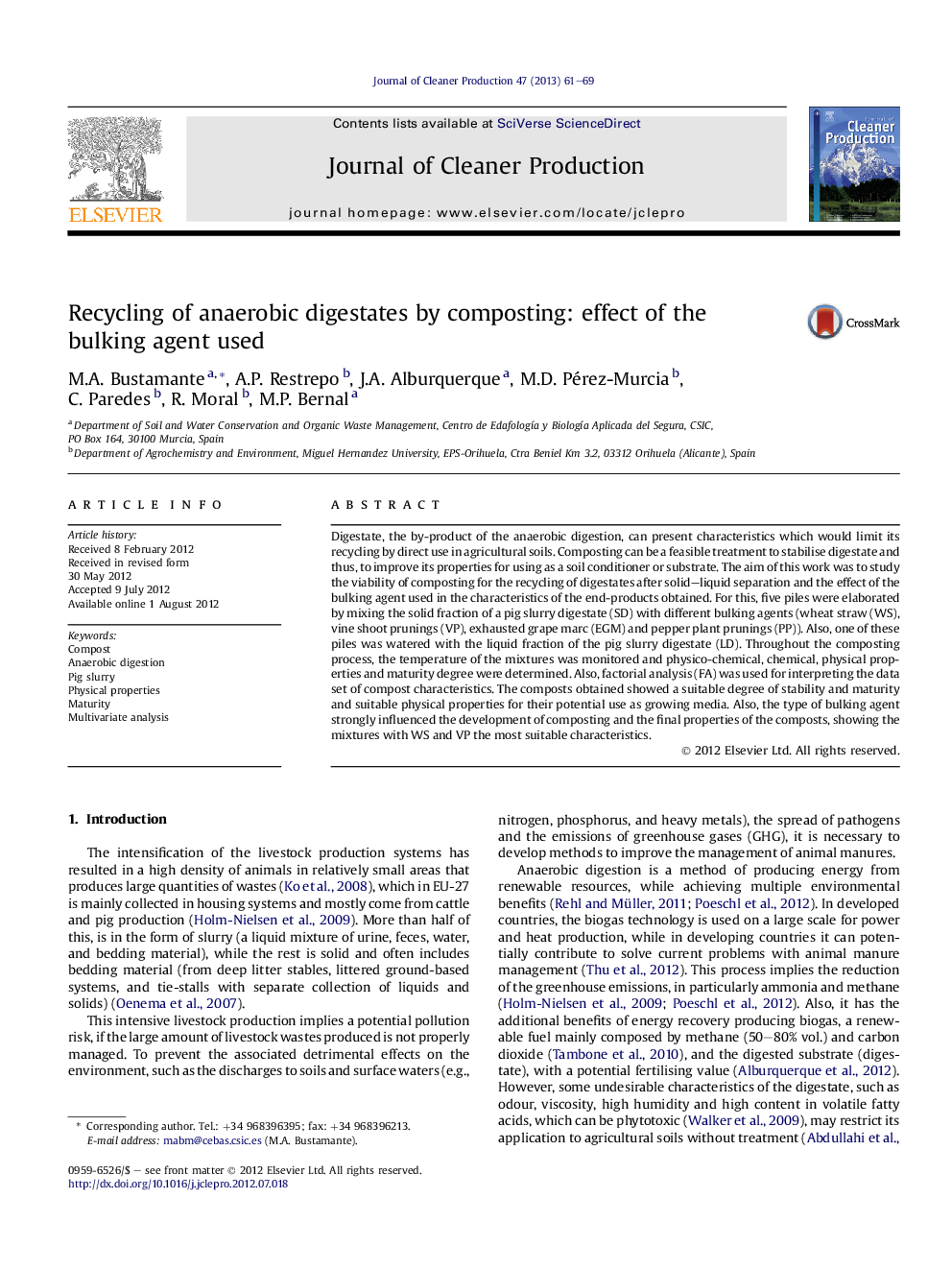| Article ID | Journal | Published Year | Pages | File Type |
|---|---|---|---|---|
| 1745471 | Journal of Cleaner Production | 2013 | 9 Pages |
Digestate, the by-product of the anaerobic digestion, can present characteristics which would limit its recycling by direct use in agricultural soils. Composting can be a feasible treatment to stabilise digestate and thus, to improve its properties for using as a soil conditioner or substrate. The aim of this work was to study the viability of composting for the recycling of digestates after solid–liquid separation and the effect of the bulking agent used in the characteristics of the end-products obtained. For this, five piles were elaborated by mixing the solid fraction of a pig slurry digestate (SD) with different bulking agents (wheat straw (WS), vine shoot prunings (VP), exhausted grape marc (EGM) and pepper plant prunings (PP)). Also, one of these piles was watered with the liquid fraction of the pig slurry digestate (LD). Throughout the composting process, the temperature of the mixtures was monitored and physico-chemical, chemical, physical properties and maturity degree were determined. Also, factorial analysis (FA) was used for interpreting the data set of compost characteristics. The composts obtained showed a suitable degree of stability and maturity and suitable physical properties for their potential use as growing media. Also, the type of bulking agent strongly influenced the development of composting and the final properties of the composts, showing the mixtures with WS and VP the most suitable characteristics.
► The digestate-derived composts had a good degree of stability and maturity. ► The bulking agent strongly influenced the process and the final compost characteristics. ► Salinity and Cu and Zn contents were the most limiting factors for the agricultural use of these composts.
